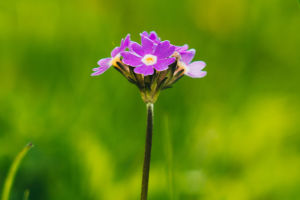In the vibrant tapestry of garden ecosystems, marigolds and butterflies weave a particularly enchanting pattern.
Both elements play pivotal roles in supporting ecological balance, making them more than just beautiful components of our outdoor spaces.
Marigolds: Nature's Pest Control
Marigolds, with their bright, sunny blooms ranging from fiery oranges to mellow yellows, are more than just a feast for the eyes. These resilient plants are known for their ability to repel pests, thanks to their natural compounds. Marigolds produce a distinctive scent that deters aphids, nematodes, and other garden nuisances. This makes them invaluable in organic gardening, reducing the need for chemical interventions. Their robust presence in garden beds not only brightens the space but also enhances soil health and reduces pest populations, benefiting a broader range of plants.
Create a butterfly friendly space in your garden or start a butterfly garden
Video by Butterflies & Birds in the Backyard
Butterflies: Pollinators and Indicators
Butterflies, with their delicate wings and graceful flight, are crucial pollinators. As they flit from flower to flower, they transfer pollen, enabling plants to reproduce and maintain genetic diversity. This process is essential for the health of many flowering plants, including marigolds. By attracting butterflies, marigolds contribute to a thriving pollinator network, which supports not only the plants themselves but also the broader ecosystem.
Moreover, butterflies are indicators of environmental health. Their presence and diversity often reflect the quality of the habitat. A thriving butterfly population typically signals a well-balanced ecosystem with abundant flowering plants, clean air, and suitable conditions. Thus, cultivating marigolds in gardens not only supports these enchanting insects but also helps monitor and maintain ecological balance.
Creating a Butterfly-Friendly Garden
To maximize the ecological benefits of marigolds and butterflies, gardeners can take several steps:
1.Plant Variety: Incorporate a variety of flowering plants alongside marigolds to provide nectar sources throughout the growing season. This diversity supports different butterfly species and extends their activity period.
2.Avoid Pesticides: Minimize the use of chemicals that can harm butterflies and other beneficial insects. Marigolds’ natural pest-repelling properties help reduce the need for such interventions.
3.Provide Habitat: Ensure there are places for butterflies to lay eggs and find shelter. Plants with dense foliage or specific host plants can cater to the needs of various butterfly species.
4.Water and Shelter: Offer a water source and create sheltered spots in the garden to help butterflies stay hydrated and safe from predators.
Lykkers, in essence, marigolds and butterflies not only enhance the beauty of gardens but also play crucial roles in maintaining ecological balance. By fostering environments that support both, gardeners contribute to a healthier, more vibrant ecosystem.


